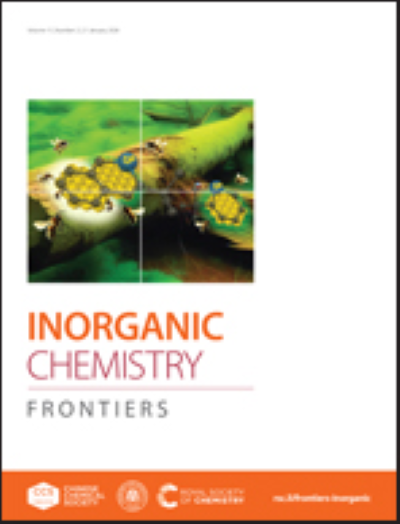Synthesis of Novel Organic Ni (II) N-isonicotinoylhydrazine-Carbothioamide Complexes and their Application in the Oxygen Evolution Reactions
IF 6.1
1区 化学
Q1 CHEMISTRY, INORGANIC & NUCLEAR
引用次数: 0
Abstract
The five novel nickel organic complexes featuring different electron-rich and electron-deficient groups were synthesized as electrocatalysts by using N-(aryl/alkyl)-2-isonicotinoylhydrazine-1-carbothioamide compounds in coordination with nickel acetate tetrahydrate and 1,10-phenanthroline. These Ni-complexes were characterized using infrared and Raman spectroscopy and were subsequently employed for the oxygen evolution reaction (OER) in water splitting under alkaline conditions. The overpotential and Tafel slope for Ni-based complex Ni-1 were as low as 454 mV and 111.90 mV dec-1, respectively, at a current density of 10 mA cm-2, indicating excellent electrochemical performance. Furthermore, Ni-1 demonstrated good electrochemical stability, with only minor voltage fluctuations observed during the continuous bubble generation over a 40 hours electrolysis period and nickel maintains a +2 oxidation state (Ni2+) in the complex both before and after the OER test via characterization of N2p spectra by X-ray photoelectron spectroscopy (XPS) measurements. This study confirms the electronic effect of substituent groups on the water-splitting ability of Ni-complexes bearing the two different organic ligands, showing that the overpotential and Tafel slope increase with a decrease in the electron-donating capacity of the substituent groups.新型有机Ni (II) n -异烟碱酰肼-碳硫酰胺配合物的合成及其在析氧反应中的应用
通过使用 N-(芳基/烷基)-2-异烟酰肼-1-硫代酰胺化合物与四水醋酸镍和 1,10-菲罗啉配位,合成了五种具有不同富电子和缺电子基团的新型镍有机络合物作为电催化剂。利用红外光谱和拉曼光谱对这些镍络合物进行了表征,随后将其用于碱性条件下水分离中的氧进化反应(OER)。在电流密度为 10 mA cm-2 时,镍基络合物 Ni-1 的过电位和 Tafel 斜率分别低至 454 mV 和 111.90 mV dec-1,表明其具有优异的电化学性能。此外,通过 X 射线光电子能谱(XPS)测量 N2p 光谱,Ni-1 还表现出良好的电化学稳定性,在 40 小时的连续电解产生气泡过程中仅观察到轻微的电压波动,并且在 OER 测试前后,复合物中的镍均保持 +2 氧化态(Ni2+)。这项研究证实了取代基团对含有两种不同有机配体的镍络合物分水能力的电子效应,表明过电位和塔菲尔斜率随着取代基团电子供能能力的降低而增加。
本文章由计算机程序翻译,如有差异,请以英文原文为准。
求助全文
约1分钟内获得全文
求助全文
来源期刊

Inorganic Chemistry Frontiers
CHEMISTRY, INORGANIC & NUCLEAR-
CiteScore
10.40
自引率
7.10%
发文量
587
审稿时长
1.2 months
期刊介绍:
The international, high quality journal for interdisciplinary research between inorganic chemistry and related subjects
 求助内容:
求助内容: 应助结果提醒方式:
应助结果提醒方式:


